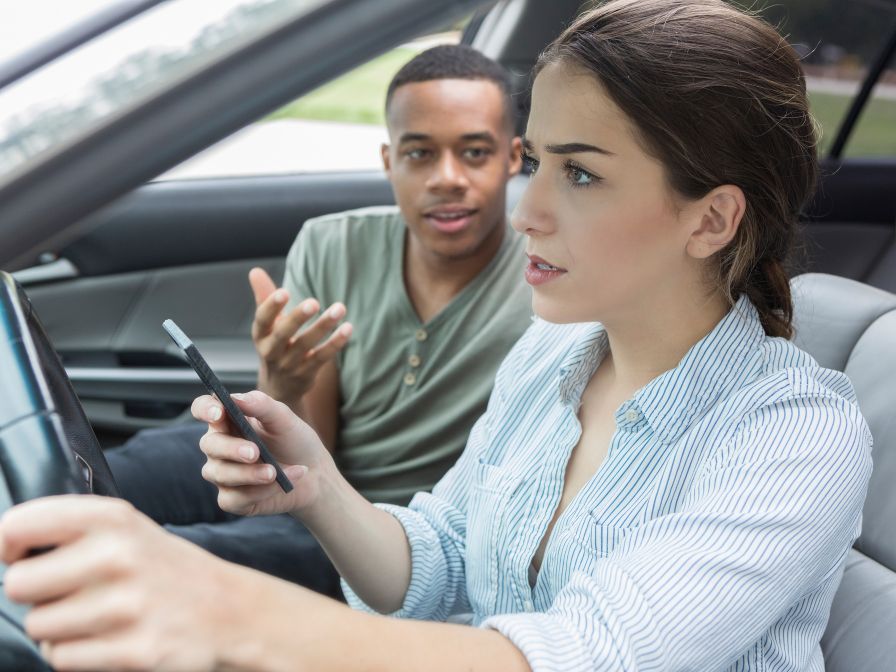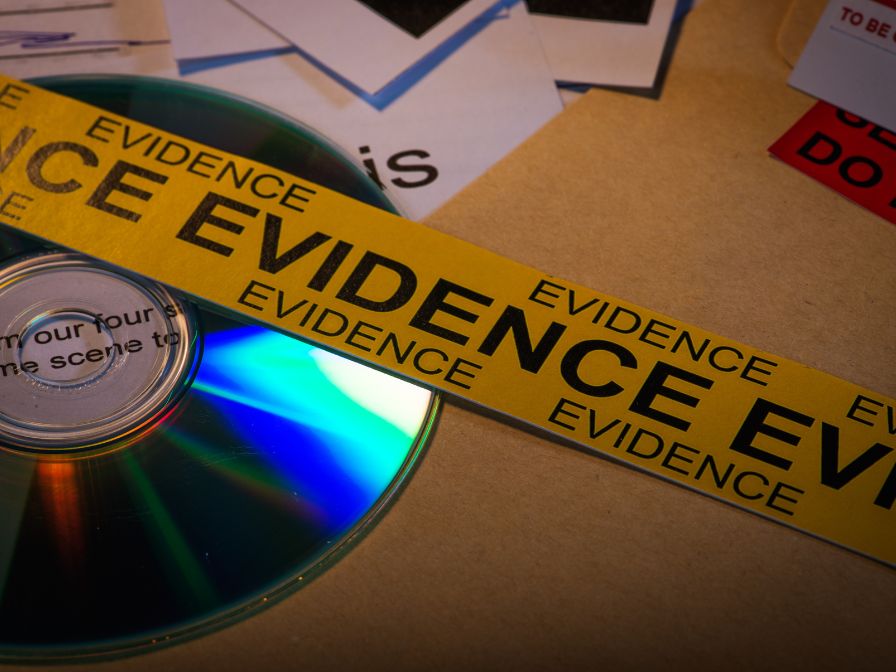 In today’s digital age, the call of a text message, the allure of a social media notification, or even the temptation to adjust in-car settings can prove catastrophic when behind the wheel. Distracted driving has swiftly emerged as one of the leading causes of road accidents, claiming countless lives each year.
In today’s digital age, the call of a text message, the allure of a social media notification, or even the temptation to adjust in-car settings can prove catastrophic when behind the wheel. Distracted driving has swiftly emerged as one of the leading causes of road accidents, claiming countless lives each year.
For those affected by such carelessness, the aftermath can be a confusing blur of insurance claims, medical bills, and emotional trauma. Proving that a driver was distracted during the accident becomes crucial not just for justice, but also for damages sustained in a car accident and compensation.
If you or a loved one were injured as a result of a distracting driving collision, call a car accident lawyer at Munley Law.
The Dangers of Distracted Driving
As roads become busier and vehicles more sophisticated, the instances of distracted driving are unfortunately on the rise. The figures paint a concerning picture: distracted driving claimed 3,522 lives in 2021 alone. Such accidents aren’t just statistics on a page; they represent real families torn apart and lives changed forever.
To understand the gravity of this issue, it’s crucial to recognize the three primary types of distractions:
- Visual Distractions: These pull the driver’s eyes away from the road. It could be a quick glance at a text message, looking at a GPS, or even admiring scenery. Even a few seconds off the road can lead to a fatal mistake.
- Manual Distractions: This involves the driver taking one or both hands off the wheel. Examples include adjusting the radio, eating, or reaching for something in the backseat. Without full control over the vehicle, reaction times decrease, and the risk of an accident increases.
- Cognitive Distractions: Even if the eyes are on the road and hands on the wheel, a driver can still be distracted mentally. Engaging in a heated conversation, daydreaming, or being lost in thought are all forms of cognitive distractions.
While many drivers believe they can multi-task efficiently, the human brain isn’t truly designed to handle driving—a task that requires undivided attention—and another task simultaneously
Common Indicators of Distracted Driving
After an accident, discerning the signs of a distracted driver can be pivotal in understanding the cause. Here are some common indicators:
- Behavior at the Scene: A distracted driver might exhibit signs of guilt or agitation. Occasionally, they may inadvertently disclose their distractions, mentioning tasks like adjusting their music or answering a call.
- Inconsistent Statements: A distracted driver’s account of events may change or be unclear, revealing lapses in their attention at the crucial moment. For instance, they might initially overlook mentioning a phone call, only to admit it later.
- Eyewitness Accounts: Sometimes, the most straightforward evidence comes from bystanders. Witnesses may have observed the driver engaging in activities like texting, fiddling with controls, or even eating before the crash. Their testimonies can be instrumental in painting a clear picture.
- Physical Clues in the Vehicle: The scene inside the car post-accident can be telling. An open food container, a phone on a recently sent message, or headphones plugged in can all hint at the driver’s pre-accident activities.
In the moments following a crash, these signs and testimonies can offer invaluable insights. Recognizing them can be the first step in holding distracted drivers accountable.
There are also critical pieces of evidence that can be utilized in a personal injury claim to determine if the accident was a result of distracted driving.
Electronic Evidence
In our digitally connected era, electronic devices often leave behind a trail of evidence that can be crucial in determining if a driver was distracted at the time of an accident. Here are key aspects to consider:
 Cell Phone Records: With the right legal permissions, one can access a driver’s cell phone records. Timestamps on calls, texts, or app activities during the accident’s timeframe can be compelling evidence of distraction.
Cell Phone Records: With the right legal permissions, one can access a driver’s cell phone records. Timestamps on calls, texts, or app activities during the accident’s timeframe can be compelling evidence of distraction.- GPS and Digital Footprints: Modern cars often come with integrated GPS systems. Reviewing the logs can show if a driver was inputting directions or adjusting settings at the time of the incident.
- Social Media Activity: A quick Tweet, a status update, or even an uploaded photo can have devastating consequences when done behind the wheel. Checking for social media activity around the time of the accident can provide insights into the driver’s actions.
- Onboard Diagnostics and Infotainment Systems: Some newer vehicles come equipped with systems that record user interactions, such as music changes, voice commands, or screen touches. Extracting this data can help piece together the moments leading to the crash.
Physical Evidence from the Scene
The immediate aftermath of an accident often provides tangible proof that can indicate a driver’s state and actions just before the collision.
- Objects Inside the Car: The scene inside the vehicle can offer a snapshot of the moments preceding the crash. An open makeup kit, food wrappers, scattered books, or a phone displaying a half-typed message can hint at sources of distraction.
- Vehicle Controls: The state and positioning of various car controls can also be telling. A blaring radio, an air conditioning set at extreme temperatures, or an open glove compartment might indicate last-minute adjustments or divided attention.
- Skid Marks and Damage Patterns: The presence or absence of skid marks can reveal whether a driver reacted in time. For instance, no skid marks might suggest a completely distracted driver who didn’t notice the impending danger. Damage patterns on the vehicle can also show the angle and severity of impact, further illuminating the driver’s possible distractions.
- Passenger Testimonies: While not a physical piece of evidence, passengers can provide insights into the driver’s actions. Their firsthand account can corroborate or refute other findings.
Expert Testimony
While tangible evidence can speak volumes, sometimes the intricacies of an accident demand a deeper, expert-driven analysis.
- Accident Reconstruction Specialists: These experts possess the training to analyze the nuances of a crash scene. By evaluating vehicle damages, road conditions, and other evidence like skid marks, they can reconstruct the event’s sequence and potentially identify signs of distraction.
- Forensic Technologists: Especially vital when electronic evidence is at play, these professionals can extract and interpret data from phones, GPS systems, and other digital devices. Their analyses can provide a minute-by-minute account of a driver’s activities leading up to the crash.
- Medical Experts: In some cases, the physical or cognitive condition of a driver becomes central to the case. Medical professionals can testify on the potential effects of medications, fatigue, or medical conditions that might have contributed to impaired attention.
- Psychologists: Understanding human behavior and reaction times can be crucial, especially when determining if a driver has ample time to respond. Psychologists can provide insights into how distractions can delay or alter reactions in critical situations.
Camera Footage
In the age of surveillance and digital documentation, camera footage stands as one of the most definitive forms of evidence when determining driver distraction.
- Dashcams: Increasingly popular among drivers, dashcams record real-time footage of both the road ahead and, in some cases, the vehicle’s interior. This footage can capture the driver’s actions leading up to the crash and the events outside the vehicle.
- Traffic and Intersection Cameras: Many urban areas have cameras installed at traffic lights, intersections, and busy stretches to monitor traffic flow and violations. Retrieving this footage can offer a third-party view of the accident, showcasing driving patterns and potential distractions.
- Business and Residential Surveillance: Establishments near the accident site, such as gas stations, stores, or homes, often have security cameras. These can provide alternate angles of the incident and further context.
- Bystander Videos: In our smartphone era, bystanders frequently record unusual or erratic driving behaviors. These spontaneous recordings can be crucial, especially if they capture a driver’s distracted actions moments before an accident.
When pieced together, these critical pieces of evidence from the accident scene can weave a narrative that highlights the potential distractions that contributed to the unfortunate event.
Role of Munley Law in Your Distracted Driving Case
With their extensive experience in tackling distracted driving cases, Munley Law has championed the cause of countless victims, ensuring they get the justice and compensation they deserve.
If you or a loved one has been a victim of an accident where distracted driving is suspected, don’t leave things to chance. Seek out the expertise of a distracted driving accident attorney like those at Munley Law.

 Cell Phone Records:
Cell Phone Records:







